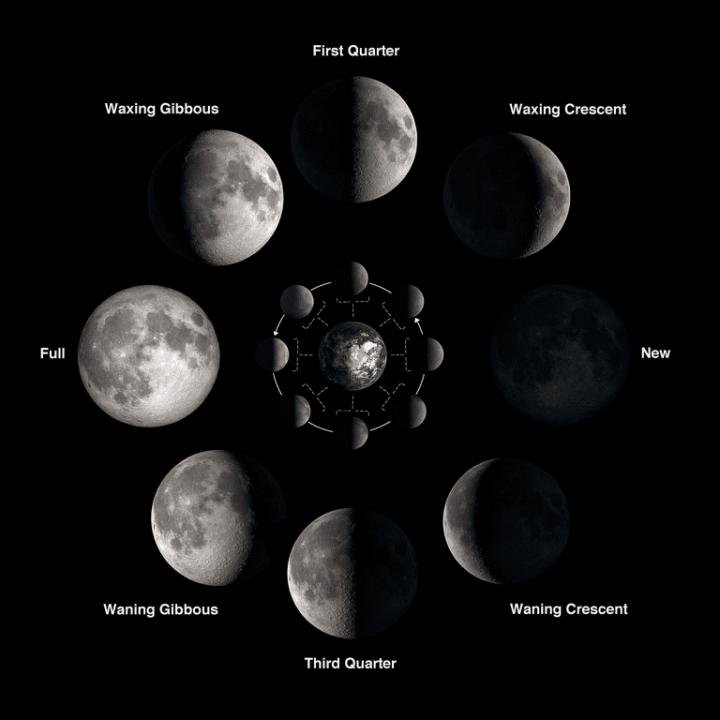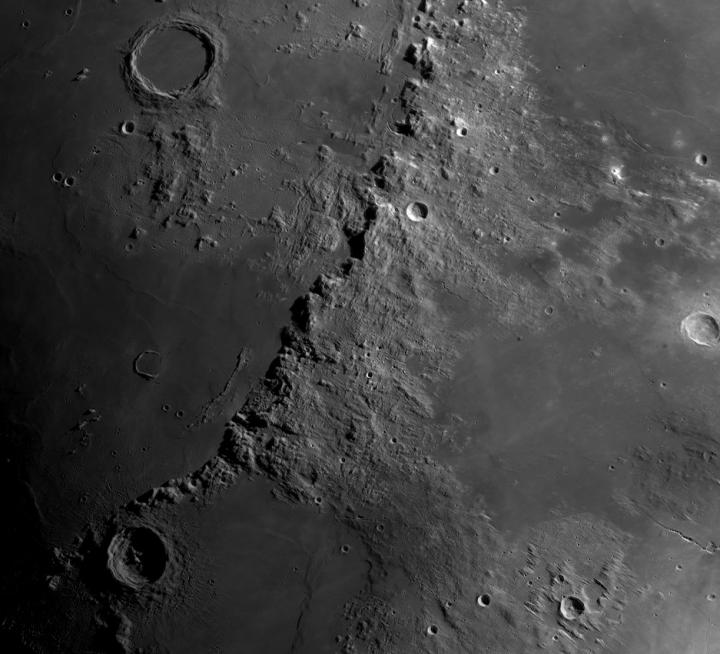When you’re looking at a Moon that’s half-illuminated—like half a pie—why is it called a “quarter Moon” instead of a “half Moon”? Seems confusing, right? Astronomer Bob Berman explains this Moon phase, which he finds the most interesting of all!
Why Do We Call It the Quarter Moon?
We’ve all looked up at the night sky and seen half of the Moon’s disk illuminated. If you had two half Moons and fit them together, you’d get a full Moon. But when you’re looking at a Half Moon, the official name is “Quarter Moon.” There’s no half-moon phase, at least not in any official way. But it appears half-illuminated. This may seem odd, but let me explain.
Think of the Moon going around the Earth as a runner going around baseball plates (first base, etc.).
- Earth is the pitcher. When the runner hits the ball, it goes to first base (one-quarter of the way around). Similarly, at the Quarter Moon, the Moon is one-quarter of the way through its orbit.
- Then, the runner goes to second base (halfway around), then to third base (three-quarters around). The Moon is three-quarters of the way through its orbital cycle and, therefore, is called the Third Quarter Moon.
At the first base or third base, you get the quarter Moons.

First Quarter vs. Third Quarter
With the Quarter Moon—which looks like half the Moon—we can see about 50% of the Moon’s face illuminated from Earth. (Technically, it’s slightly more than 50%, but who’s counting.)
Sometimes, it also gets confusing to remember which “Quarter” we are seeing:
- The Moon appears lit on the right half of the Moon during the First Quarter.
- The Moon appears lit on the left side during the Third Quarter because the Moon is on the other side of Earth.
Again, if you think of the baseball analogy, and you’re standing at home plate, the first base or First Quarter is on your right side. The third base or Third Quarter is on your side.
The First Quarter happens around day 7 of a Moon’s cycle (one week after the New Moon), and the Third Quarter usually happens around day 22 (three weeks after the New Moon).
See the Almanac’s Moon Phase Calendar.
Why the Quarter Moons Are Special
To me, the Quarter Moon is much more interesting than the Full Moon. This is the Moon that’s at its highest at sunset, just around dinner time.
While the Full Moon provides a lot of light on Earth, if you’re observing the Moon’s surface, most beginning astronomers can’t see much beyond the blinding orb. The Sun then shines straight down like a flash camera to erase all shadows and highlights.
First Quarter Moon
But take a look at the Quarter Moon. The First Quarter Moon is the “Half Moon” that we see most.
The shadowing is perfect. You see all the mountains and craters. It’s fascinating to look at. The First Quarter Moon explodes with breathtaking detail for anyone with binoculars, spotting scope, or even the smallest telescope.
Last Quarter Moon
With the Last Quarter Moon, the left half appears to be lit up by sunshine, and the rest is immersed in shadow.
It doesn’t even rise until midnight and is not at its highest until around dawn. Who’s up then? Nobody! Most of us don’t want to haul our telescopes out at 5 A.M. or 6 A.M. to look at the Half Moon when you could look at the “other Half Moon” (the First Quarter Moon) at six in the evening when it’s convenient. Everyone’s used to the First Quarter Moon.
More Cool Quarter Moon Facts
The Quarter Moon aims its terminator, the day-night line that is home to all the juicy detail, straight at us. It lies directly ahead of us as Earth is zooming through the universe. This means highlighted craters then face you like actors hamming it up, instead of pointing, foreshortened, in other directions the way the rest of the lunar phases do.
You’d think a Half Moon would be half as bright as a Full Moon, right? Oddly enough, a Half Moon is only one-tenth as bright as a Full Moon. Yet why does it seem so bright? This is because the Full Moon throws sunlight straight back at us like a movie screen, while the First Quarter’s sideways illumination creates innumerable unseen shadows on the Moon’s powdery surface.
How to Best View the Quarter Moon
Point the cheapest telescope towards the Quarter Moon. Stay below 60 power and the entire Moon will fill the field like a scene from 2001.
Even ordinary binoculars reveal the lunar Apennines, that mountain range just above dead center, whose jagged Himalaya-sized peaks tower straight up at you like skyscrapers.
Then there’s the badlands, the southern region, crazily pockmarked with a generous sampling of the 30,000 craters visible from Earth.

The scene changes dramatically each night as the terminator slithers over the Moon’s surface at 10 miles per hour. (A lunar jogger with enough stamina could keep nightfall at bay!)
Yes, this is a Moon phase packed with misconceptions. Even its name is misleading: how many realize that the Quarter Moon is the same thing as a Half Moon?












Comments